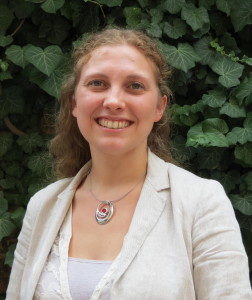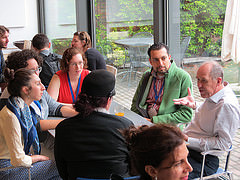by, Samantha Twietmeyer, Canada
Our conflict resolution toolboxes are being filled as we work through our first week in sunny Bologna. In his session on social entrepreneurship, John Marks, co-creator and president of Search for Common Ground, added yet another tool: vision before social action.
There is, I believe, a strong consensus amongst our intrepid group that peace is already a part of our vision. Considering this, I thought it rather poignant that we began our day with Steve Killelea, founder of the Global Peace Index (GPI), reflecting on why we are talking about peace.
Perhaps unsurprisingly, this question does not elicit a straightforward answer. Killelea observed, “if all organisms on earth must consume other organisms to survive then conflict is an inevitability of all life on earth.” So why does peace exist?
To me, it seems that it is the unique quality of the human being to reason, to learn social behavior and grow from this a new society that provides us an understanding of peace through collaboration. Our self-awareness and, therefore, our ability to understand our fellow human beings through empathy may also be integral to our understanding of peace as a subject.
This seemingly abstract concept of peace is what Killelea has tried to define through his development of the GPI, The GPI has benefitted from the increased quality and quantity of available peace data. It has grown to become a widely supported system for observing areas at risk in the world of conflict prevention.
 The systemic nature of peace is one of the most interesting aspects of Killelea’s work. Many factors contribute to or work against peace, yet one can neither define a path of causation nor accurately measure the concept empirically. We can, however, be aware of trends such as those indexed through the GPI in order to better prepare for shifts that may lead to or stimulate conflict. A new conceptual framework, the “pillars of peace,” has arisen out of this work. The pillars highlight for practitioners the areas in which we can better define our vision for peace.
The systemic nature of peace is one of the most interesting aspects of Killelea’s work. Many factors contribute to or work against peace, yet one can neither define a path of causation nor accurately measure the concept empirically. We can, however, be aware of trends such as those indexed through the GPI in order to better prepare for shifts that may lead to or stimulate conflict. A new conceptual framework, the “pillars of peace,” has arisen out of this work. The pillars highlight for practitioners the areas in which we can better define our vision for peace.
Divergences in how each of us understands peace became even more evident as Marks guided us through our plans for social entrepreneurship. Many inspired ideas for training, advocacy, awareness, and mediation were suggested and discussed. Our ideas covered topics as varied as provision of healthcare, training of political leadership, music with children, creative radio programming and facilitating communication.
While we agreed that there exists a shared notion of peace within the conflict resolution community, this exercise demonstrated for me that there are vast differences in our methods and priorities. Marks also emphasized the value of coherent planning, administration and networking, as well as the importance of framing arguments for support and funding for whatever project we pursue.

Students chat with Steve Killelea over lunch.
Overall it was an information heavy day, but one that I feel demonstrated the practical realities of our world and the intricate and systemic nature of the field. It takes a great amount of cooperation across many disciplines to conduct conflict resolution and even greater collaborative effort to truly work for peace.
So why am I talking about peace? I believe that peace is a concept best produced in an environment that allows for cooperation and space for the very best spirit of the human condition to flourish. When an individual is preoccupied with their next meal and shelter they are not given the opportunity to pursue passion and fulfillment, whether in art, music, athletics, or work. When communities support each other in achieving these basic needs and resources, a truly positive peace can begin to grow.

